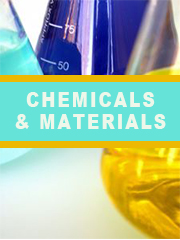TOP CATEGORY: Chemicals & Materials | Life Sciences | Banking & Finance | ICT Media

Download Report PDF Instantly
Report overview
The global Heat Resistant Polymethyl Methacrylate (PMMA) market was valued at US$ 374 million in 2022 and is projected to reach US$ 459 million by 2029, at a CAGR of 3.0% during the forecast period. The influence of COVID-19 and the Russia-Ukraine War were considered while estimating market sizes.
Polymethyl Methacrylate (PMMA) is a thermoplastic polymer of Methyl Methacrylate (MMA). It is a clear, strong and lightweight plastic generally used as a substitute to glass due to its energy efficiency and weather resistance. Heat resistant grade is a special grade of PMMA for excellent resistance to high temperature and to surface scratching. Outstanding transparency and weatherability are equivalent to general PMMA. This material is applied to parts that require high thermal stability such as high intensity lamps. The disadvantages of general-purpose grade PMMA are insufficient surface hardness, poor heat resistance, and low impact strength. The heat-resistant grade PMMA can withstand temperatures in excess of 110 degrees Celsius.
This report aims to provide a comprehensive presentation of the global market for Heat Resistant Polymethyl Methacrylate (PMMA), with both quantitative and qualitative analysis, to help readers develop business/growth strategies, assess the market competitive situation, analyze their position in the current marketplace, and make informed business decisions regarding Heat Resistant Polymethyl Methacrylate (PMMA). This report contains market size and forecasts of Heat Resistant Polymethyl Methacrylate (PMMA) in global, including the following market information:
Global key players of heat resistant polymethyl methacrylate include R hm, Trinseo, Mitsubishi Chemical, Chi Mei, etc. Global top five manufacturers hold a share over 70%. In terms of product, injection grade is the largest segment, with a share over 74%. And in terms of application, the largest application is transportation, with a share over 49%.
We surveyed the Heat Resistant Polymethyl Methacrylate (PMMA) manufacturers, suppliers, distributors and industry experts on this industry, involving the sales, revenue, demand, price change, product type, recent development and plan, industry trends, drivers, challenges, obstacles, and potential risks.
Total Market by Segment:
Global Heat Resistant Polymethyl Methacrylate (PMMA) Market, by Type, 2018-2023, 2024-2029 ($ Millions) & (Tons)
Global Heat Resistant Polymethyl Methacrylate (PMMA) Market Segment Percentages, by Type, 2022 (%)
Heat Deflection Temperature?100?
Heat Deflection Temperature?110?
Global Heat Resistant Polymethyl Methacrylate (PMMA) Market, by Application, 2018-2023, 2024-2029 ($ Millions) & (Tons)
Global Heat Resistant Polymethyl Methacrylate (PMMA) Market Segment Percentages, by Application, 2022 (%)
Medical
Lighting
Housewares
Optical
Automobile
Architectural
Others
Global Heat Resistant Polymethyl Methacrylate (PMMA) Market, By Region and Country, 2018-2023, 2024-2029 ($ Millions) & (Tons)
Global Heat Resistant Polymethyl Methacrylate (PMMA) Market Segment Percentages, By Region and Country, 2022 (%)
North America
US
Canada
Mexico
Europe
Germany
France
U.K.
Italy
Russia
Nordic Countries
Benelux
Rest of Europe
Asia
China
Japan
South Korea
Southeast Asia
India
Rest of Asia
South America
Brazil
Argentina
Rest of South America
Middle East & Africa
Turkey
Israel
Saudi Arabia
UAE
Rest of Middle East & Africa
Competitor Analysis
The report also provides analysis of leading market participants including:
Key companies Heat Resistant Polymethyl Methacrylate (PMMA) revenues in global market, 2018-2023 (Estimated), ($ millions)
Key companies Heat Resistant Polymethyl Methacrylate (PMMA) revenues share in global market, 2022 (%)
Key companies Heat Resistant Polymethyl Methacrylate (PMMA) sales in global market, 2018-2023 (Estimated), (Tons)
Key companies Heat Resistant Polymethyl Methacrylate (PMMA) sales share in global market, 2022 (%)
Further, the report presents profiles of competitors in the market, key players include:
R?hm
Trinseo
SABIC
Mitsubishi Chemical
Sumitomo Chemical
LX MMA
Lotte MCC
Chi Mei
Wanhua Chemical
Kuraray
Plaskolite
Asahi Kasei
Outline of Major Chapters:
Chapter 1: Introduces the definition of Heat Resistant Polymethyl Methacrylate (PMMA), market overview.
Chapter 2: Global Heat Resistant Polymethyl Methacrylate (PMMA) market size in revenue and volume.
Chapter 3: Detailed analysis of Heat Resistant Polymethyl Methacrylate (PMMA) manufacturers competitive landscape, price, sales and revenue market share, latest development plan, merger, and acquisition information, etc.
Chapter 4: Provides the analysis of various market segments by type, covering the market size and development potential of each market segment, to help readers find the blue ocean market in different market segments.
Chapter 5: Provides the analysis of various market segments by application, covering the market size and development potential of each market segment, to help readers find the blue ocean market in different downstream markets.
Chapter 6: Sales of Heat Resistant Polymethyl Methacrylate (PMMA) in regional level and country level. It provides a quantitative analysis of the market size and development potential of each region and its main countries and introduces the market development, future development prospects, market space of each country in the world.
Chapter 7: Provides profiles of key players, introducing the basic situation of the main companies in the market in detail, including product sales, revenue, price, gross margin, product introduction, recent development, etc.
Chapter 8: Global Heat Resistant Polymethyl Methacrylate (PMMA) capacity by region & country.
Chapter 9: Introduces the market dynamics, latest developments of the market, the driving factors and restrictive factors of the market, the challenges and risks faced by manufacturers in the industry, and the analysis of relevant policies in the industry.
Chapter 10: Analysis of industrial chain, including the upstream and downstream of the industry.
Chapter 11: The main points and conclusions of the report.